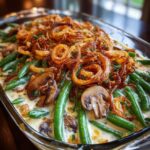The Difference Between Croissants and Gipfeli: A Comprehensive Guide
Introduction
Chocolate and croissants are beloved treats worldwide, but when it comes to European pastries, both the croissant and gipfeli hold a special place. While these pastries may look similar at first glance, their differences are rooted in history, ingredients, and cultural significance. This guide explores the distinctions between the buttery French croissant and the less indulgent Swiss gipfeli, shedding light on their unique characteristics.
What is a Croissant?
Origins and History
France introduced the croissant to the world, where it quickly became a breakfast staple. Bakers traditionally made this pastry from layers of dough and butter, which gave it its flaky, buttery texture. The name “croissant” comes from the French word for “crescent,” referring to its crescent shape. The croissant has a rich history, with its roots tracing back to the Austrian kipferl, a crescent-shaped bread that inspired the French version.
Learn more about the history of croissants.
Ingredients and Texture
Bakers achieve the hallmark flaky texture of the croissant by laminating dough with butter, creating multiple layers that puff up during baking. The key ingredients include flour, butter, yeast, sugar, and milk. When baked to perfection, the croissant offers a crisp outer layer with a soft, airy interior.
For those interested in perfecting their croissant-making skills, check out our Ultimate Guide to Making Crispy Chicken Fritta, which offers tips on achieving the perfect texture in other crispy foods.
What is a Gipfeli?
Origins and History
The gipfeli, a Swiss pastry often compared to the croissant, has its own distinct identity rooted in Swiss culture. Unlike the French croissant, which is known for indulgence, the gipfeli is more modest in flavor and texture. Swiss people frequently enjoy this pastry as part of a traditional breakfast, and it holds a prominent place in local bakeries.
Ingredients and Texture
The gipfeli differs from the croissant in its ingredients and preparation. While it also contains flour, butter, and yeast, bakers use less butter in a gipfeli, resulting in a pastry that is less flaky and denser than a croissant. The gipfeli has a subtle, slightly sweet flavor, making it a versatile option that pairs well with both sweet and savory accompaniments.
Explore more traditional Swiss recipes and variations with our All Recipes Collection.
Key Differences Between Croissants and Gipfeli
Butter Content
One of the most noticeable differences between a croissant and a gipfeli is the butter content. Croissants contain a rich amount of butter, giving them their characteristic flakiness and melt-in-the-mouth texture. On the other hand, gipfeli use less butter, resulting in a denser, less flaky pastry. This difference in butter content also impacts the flavor, with croissants being more indulgent and buttery, while gipfeli have a milder taste.
Shape and Size
While both pastries share a crescent shape, subtle differences set them apart. The croissant typically has a more pronounced crescent shape and is often larger than a gipfeli. The gipfeli is usually smaller and more compact. This difference in size and shape also reflects their respective textures, with the croissant being airier and the gipfeli more dense.
Cultural Context
In France, the croissant symbolizes the country’s rich culinary tradition. It is often associated with French patisseries and breakfast culture. In contrast, the gipfeli plays a similar role in Swiss culture but with a more understated presence. Swiss people of all ages frequently enjoy it as part of their daily routine.
Flavor and Texture Comparison
Croissants
- Flaky and Buttery: The high butter content and laminated dough create a delicate, flaky texture that is synonymous with French croissants.
- Indulgent Flavor: The rich buttery flavor of a croissant makes it a decadent treat, often enjoyed on its own or with a simple spread of jam or chocolate.
Gipfeli
- Subtle and Less Buttery: With a lower butter content, the gipfeli offers a more neutral flavor that can pair with a variety of fillings and toppings.
- Denser Texture: Unlike the croissant, the gipfeli has a denser, slightly chewy texture, making it a heartier option for breakfast.
For tips on achieving the right balance in pastry recipes, consider checking out our Comprehensive Guide to Crispy Chicken.
Cultural Significance in France vs. Switzerland
Croissants in France
The croissant is more than just a pastry in France; it is a cultural icon. French people often start their day with a croissant and coffee, enjoying the flaky pastry in cafes and patisseries. The croissant also symbolizes French culinary excellence, with many bakeries and chefs taking pride in perfecting the art of croissant-making.
Gipfeli in Switzerland
In Switzerland, the gipfeli holds similar cultural significance, albeit in a more understated way. Swiss people commonly enjoy it in homes and bakeries, often with butter, honey, or cheese. While the gipfeli may not have the same global recognition as the croissant, it remains deeply ingrained in Swiss daily life and traditions.
How They Are Served and Consumed
Croissants
- Common Accompaniments: In France, croissants are typically served with coffee, and sometimes with a side of jam or butter. They are often enjoyed as a standalone breakfast item or as part of a larger brunch spread.
- Sweet Variations: French bakeries offer a variety of croissants, including almond croissants and chocolate-filled croissants, catering to those with a sweet tooth.
Gipfeli
- Savory or Sweet: The gipfeli can be enjoyed in various ways. In Switzerland, people often pair it with savory items like cheese or cold cuts, or with sweet spreads like honey and jam.
- Regional Variations: While the classic gipfeli is the most popular, regional variations include different fillings or toppings, reflecting the diverse culinary landscape of Switzerland.
Global Influence and Variations
Croissants Around the World
The croissant has transcended its French origins and now appears in bakeries around the world. Different countries have put their own spin on the classic croissant, resulting in unique variations such as almond croissants, matcha croissants, and even cruffins—a hybrid of a croissant and a muffin.
Gipfeli Variations
While the gipfeli is predominantly found in Switzerland and neighboring countries, it has also seen adaptations. In Germany, for example, a similar pastry known as “butterhörnchen” is popular, closely resembling the gipfeli but with regional twists in flavor and texture.
FAQs
- What is the main difference between a croissant and a gipfeli?
- The primary difference lies in the butter content and texture. Croissants are flakier and more buttery, while gipfeli are denser and less indulgent.
- Are gipfeli healthier than croissants?
- Due to their lower butter content, gipfeli are generally considered a lighter option compared to croissants.
- Can you make croissants and gipfeli at home?
- Yes, both pastries can be made at home, though croissants require more skill and time due to the lamination process.
- Which pastry is more popular in Switzerland?
- While croissants are popular, gipfeli holds a special place in Swiss culture and is more commonly found in Swiss households and bakeries.
- How should you store croissants and gipfeli to keep them fresh?
- It is best to store both pastries in an airtight container at room temperature for up to two days. For longer storage, freezing them is recommended.
Conclusion
In conclusion, while croissants and gipfeli may look similar, they offer distinct experiences in flavor, texture, and cultural significance. The buttery, flaky croissant represents French indulgence, while the more modest gipfeli reflects Swiss practicality and tradition. Whether you prefer the richness of a croissant or the subtlety of a gipfeli, both pastries have earned their place in the world of baked goods, delighting people across different cultures.
For more culinary inspiration, check out our All Recipes Collection.
I’m Billy, a classically trained culinary school graduate from The Culinary Institute of America with over 12 years in the restaurant industry and over 19 years of cooking experience.







